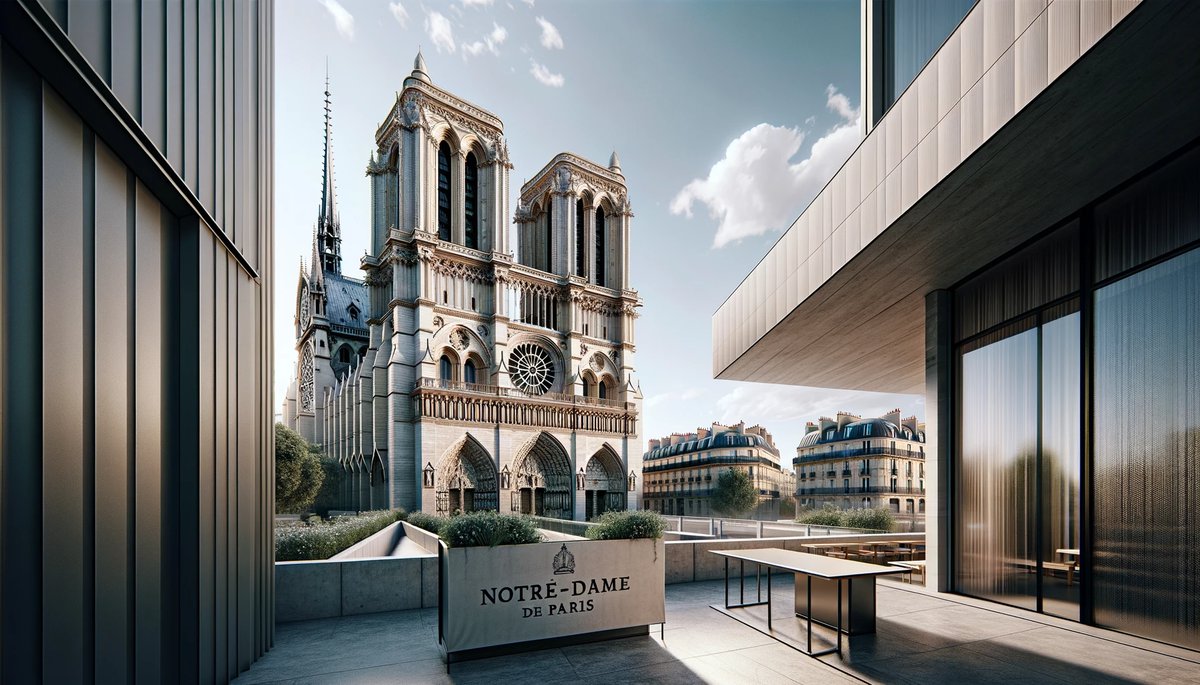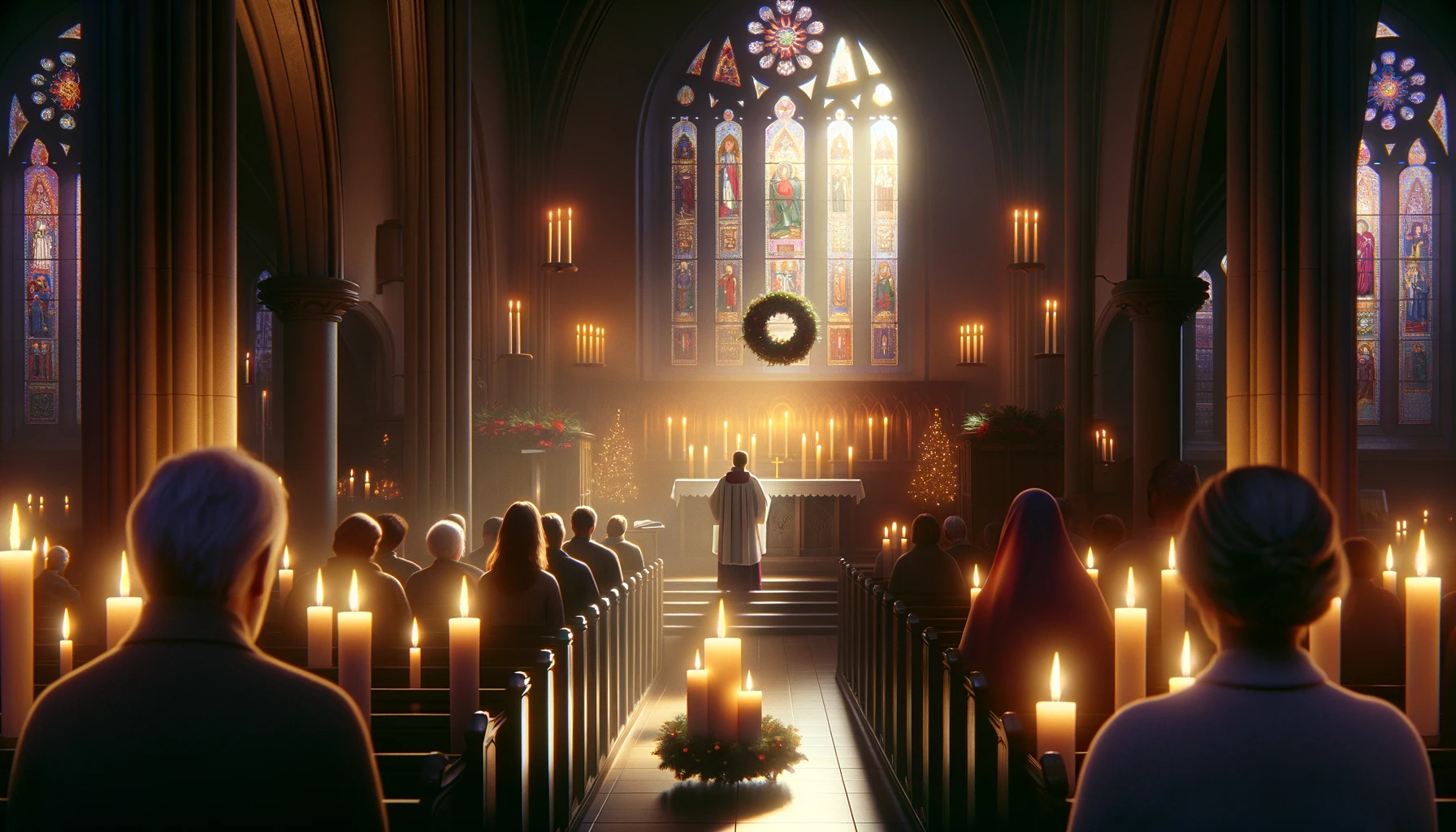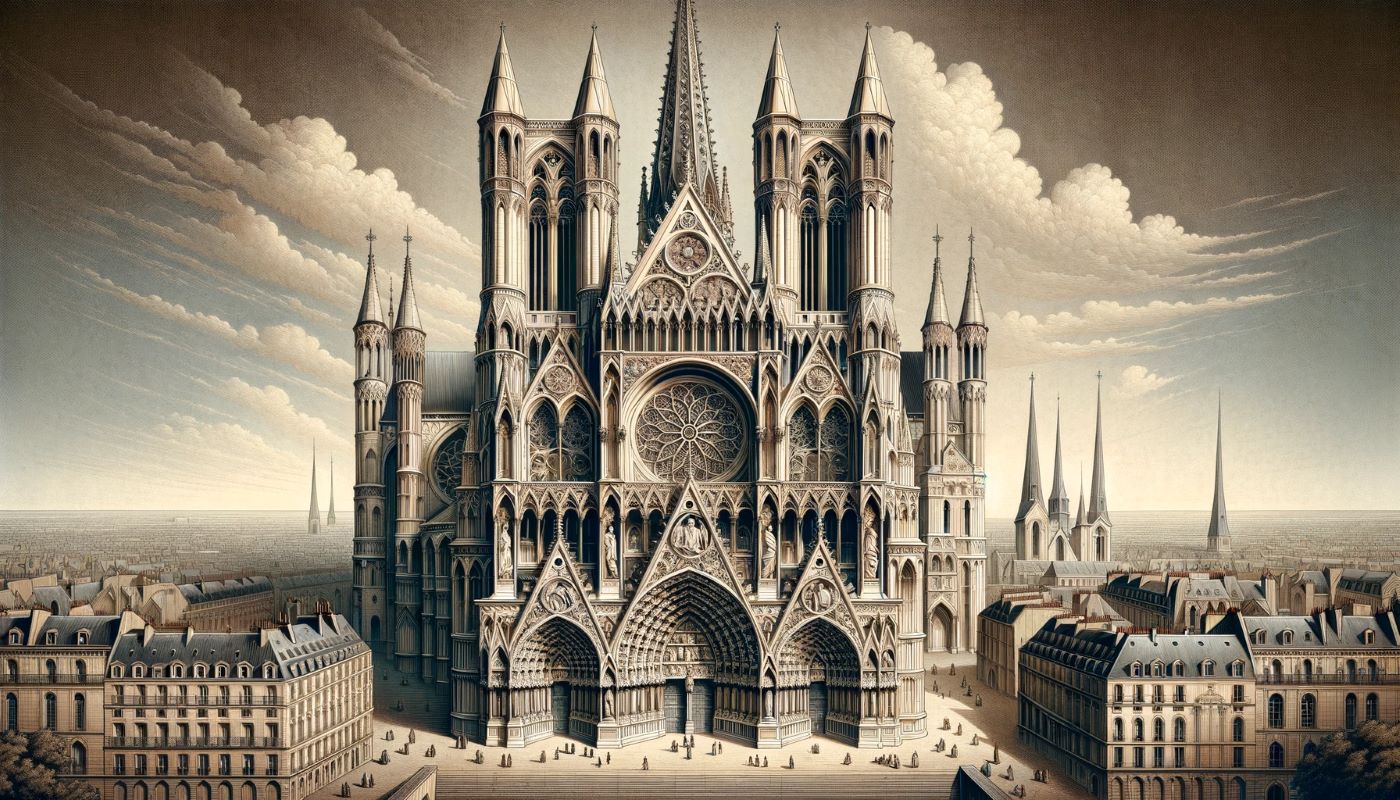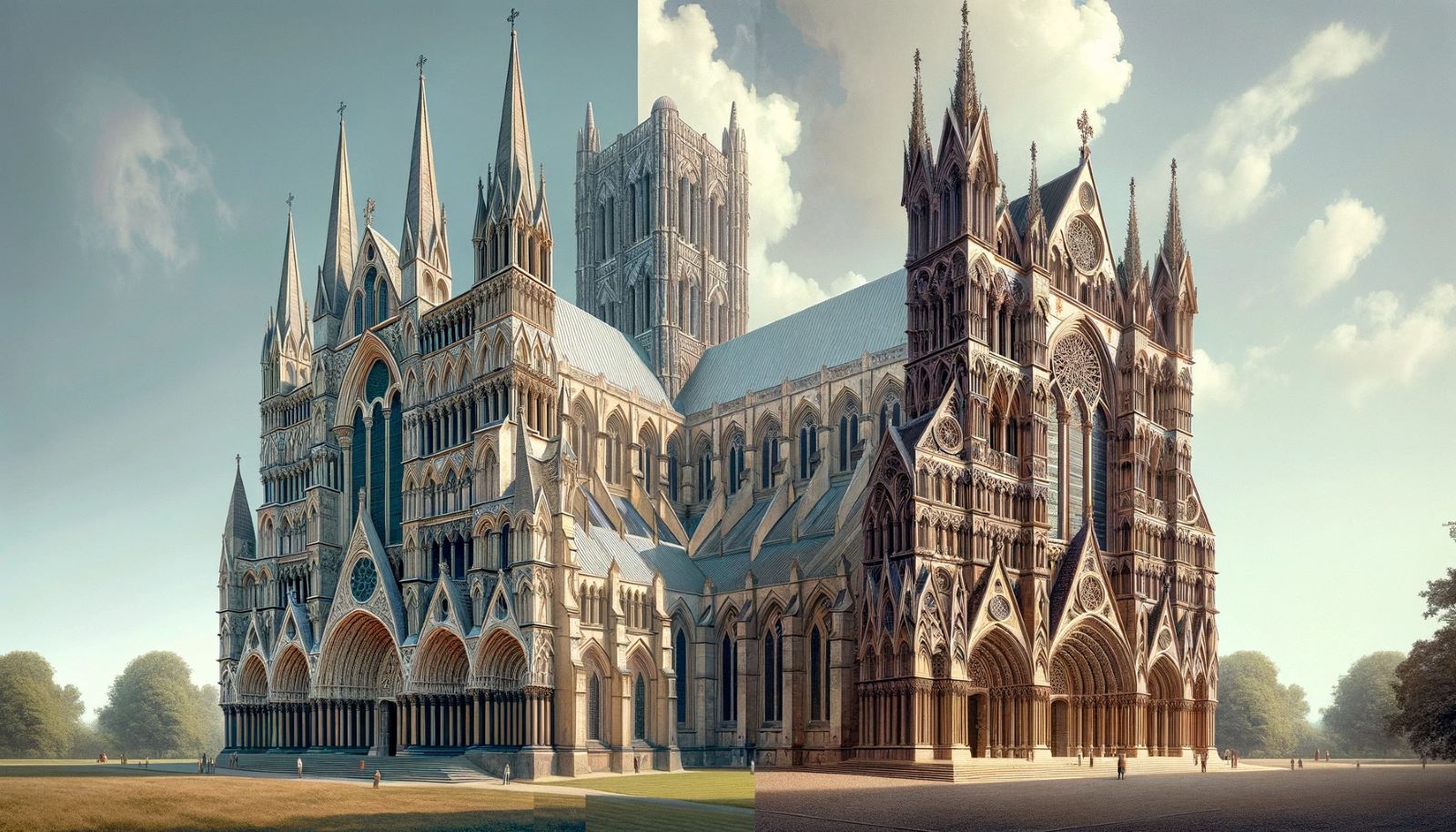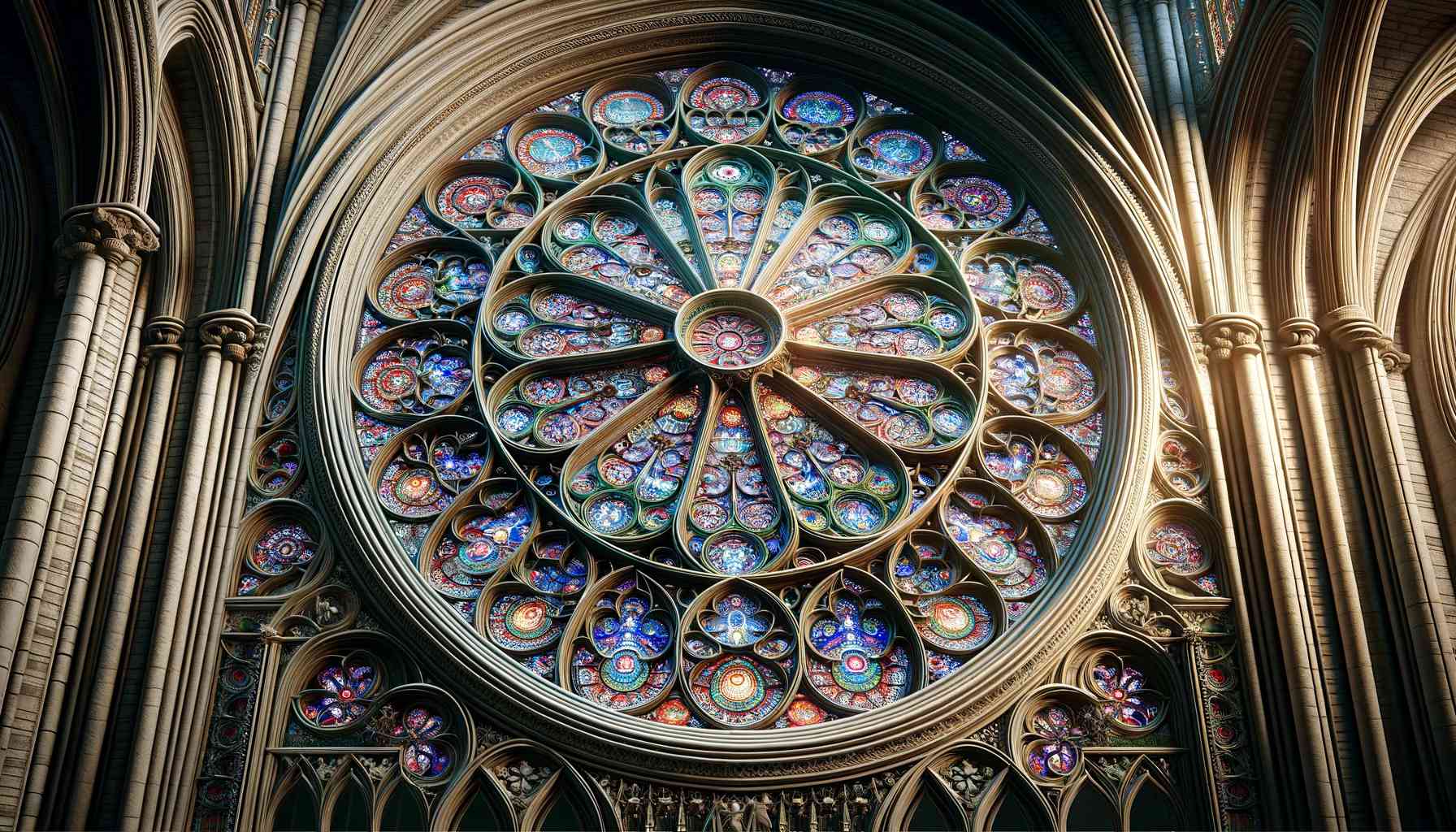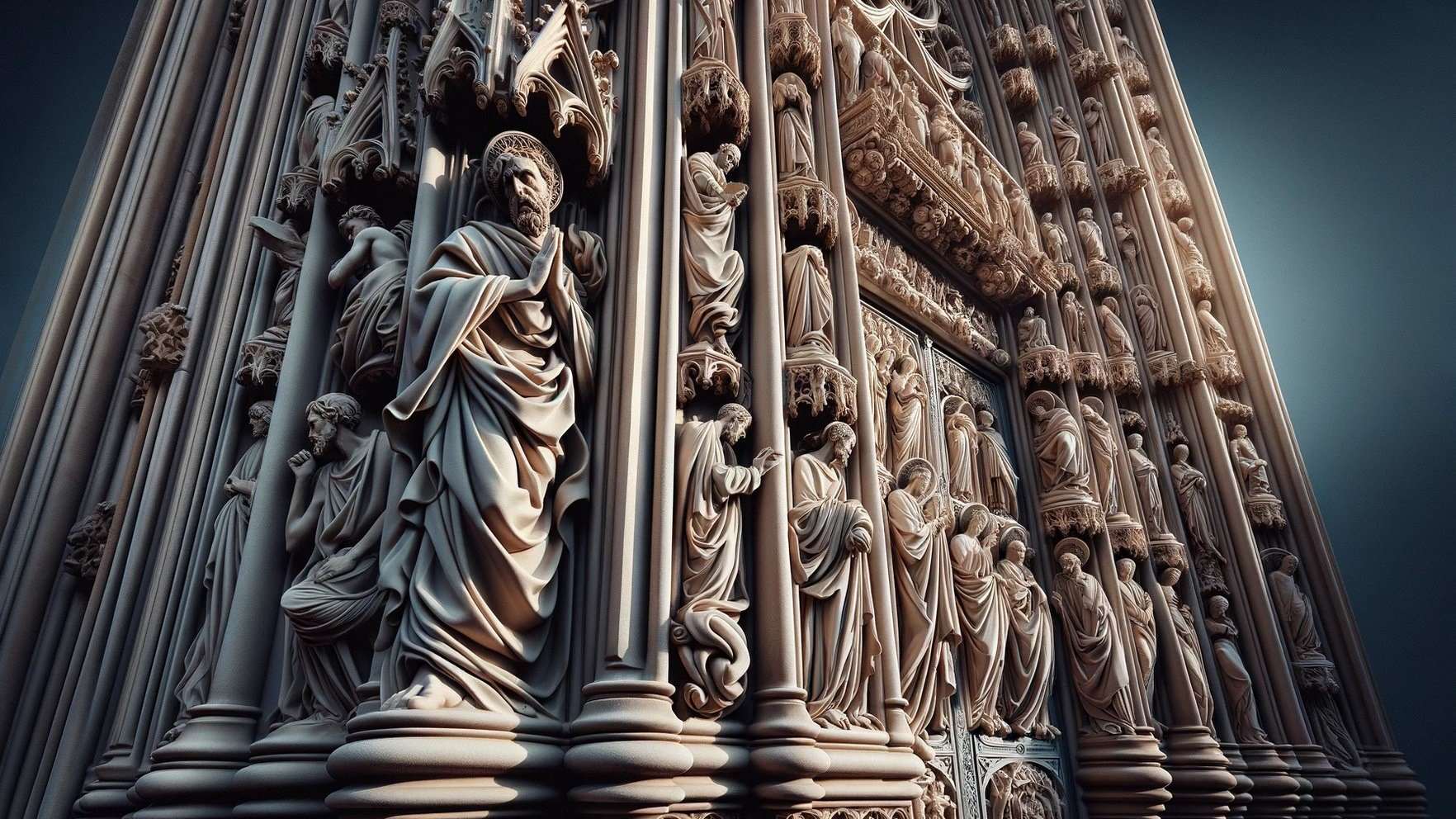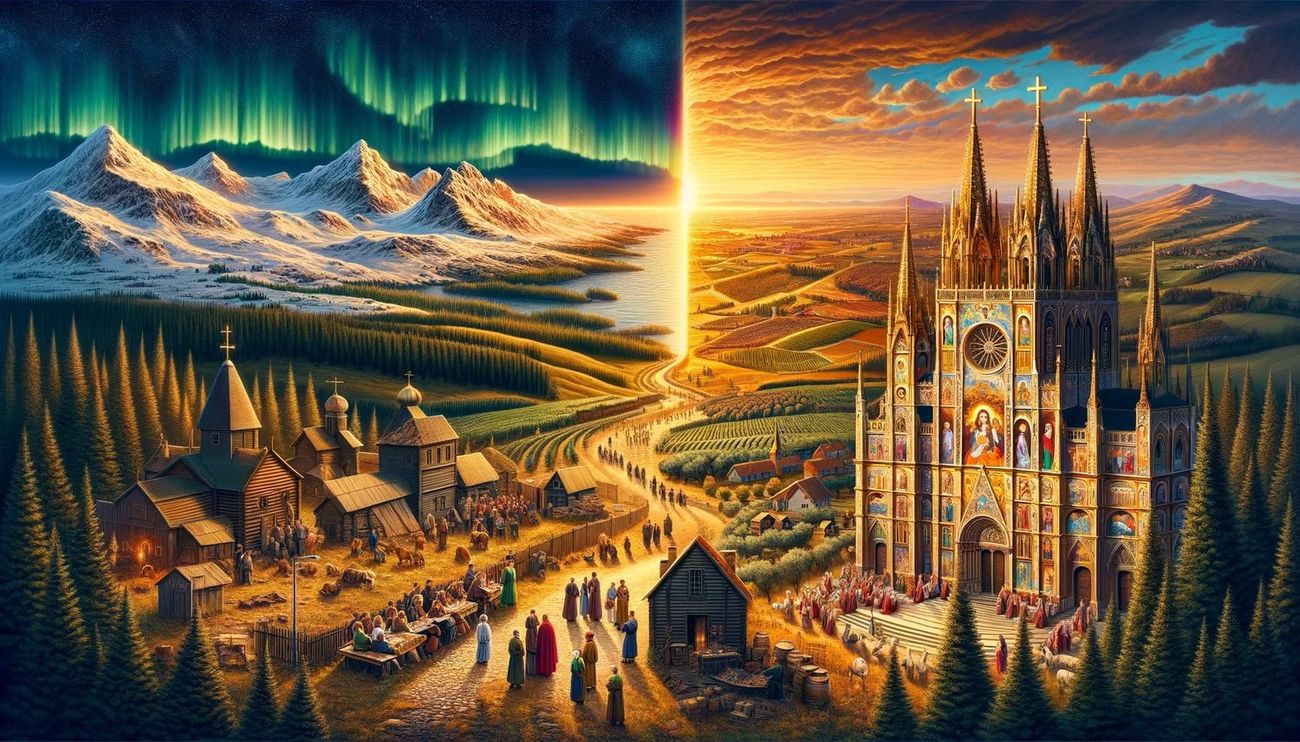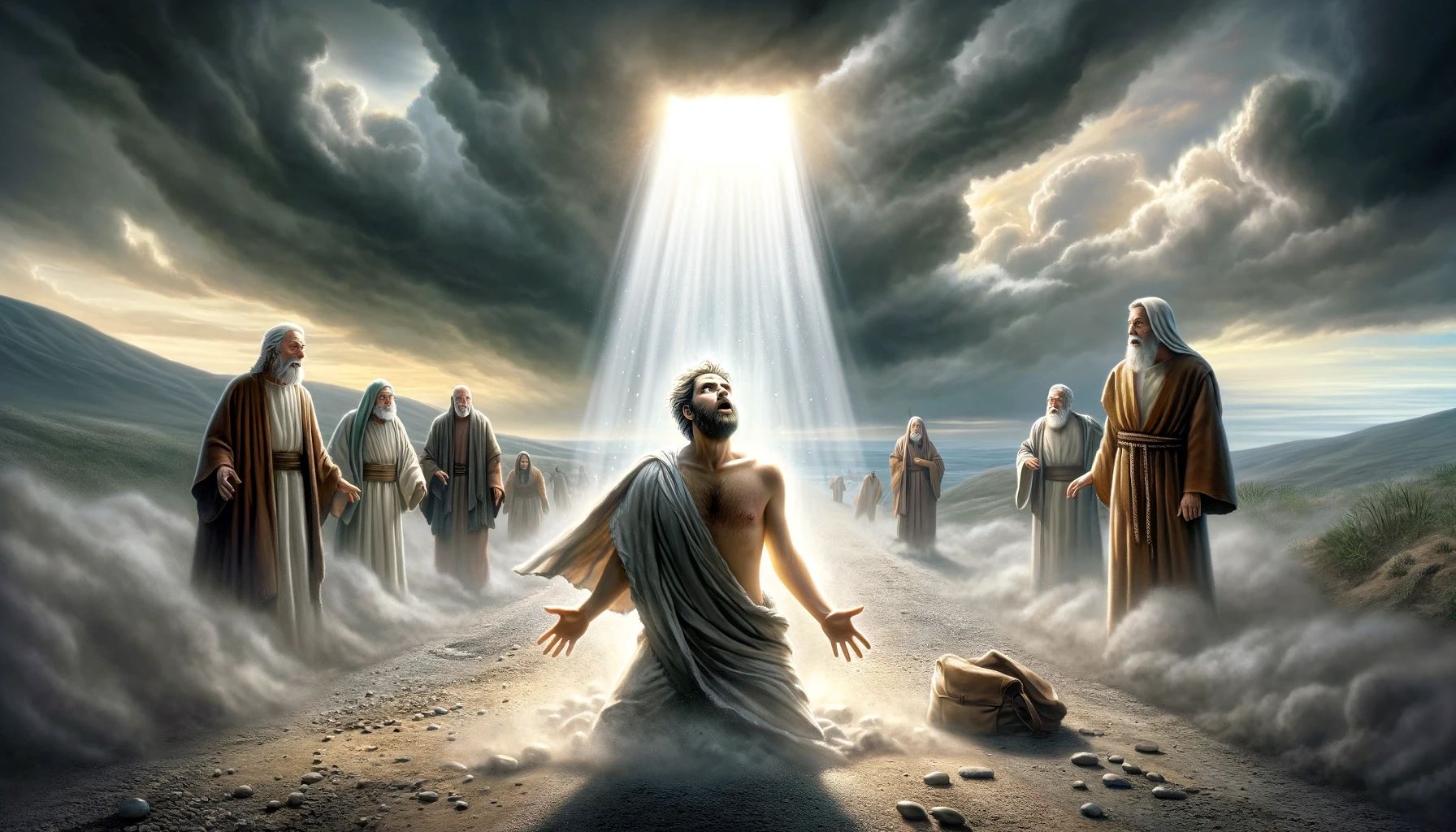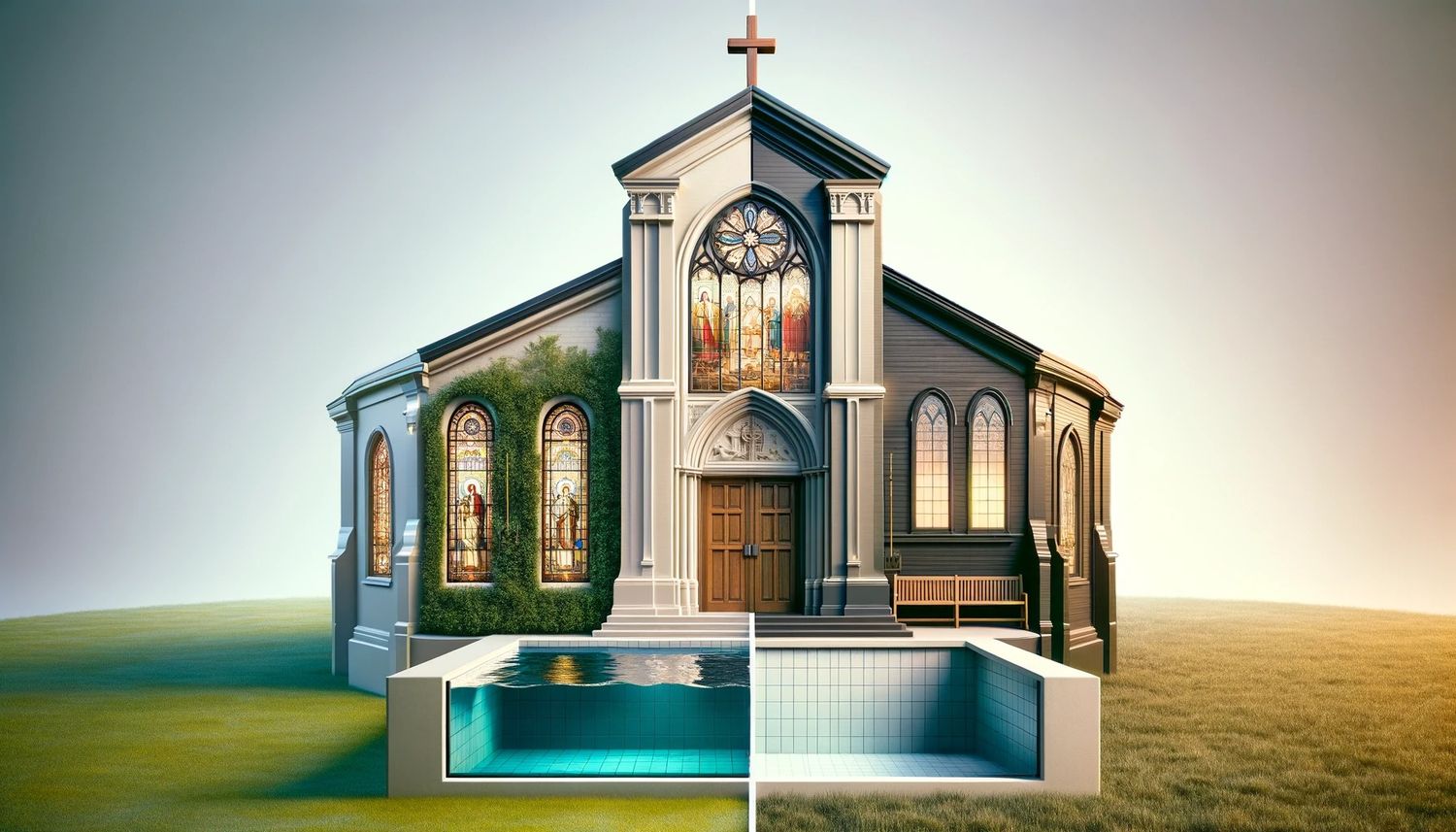Home>Arts and Culture>What Are The Main Structural And Stylistic Features Of A Gothic Cathedral?
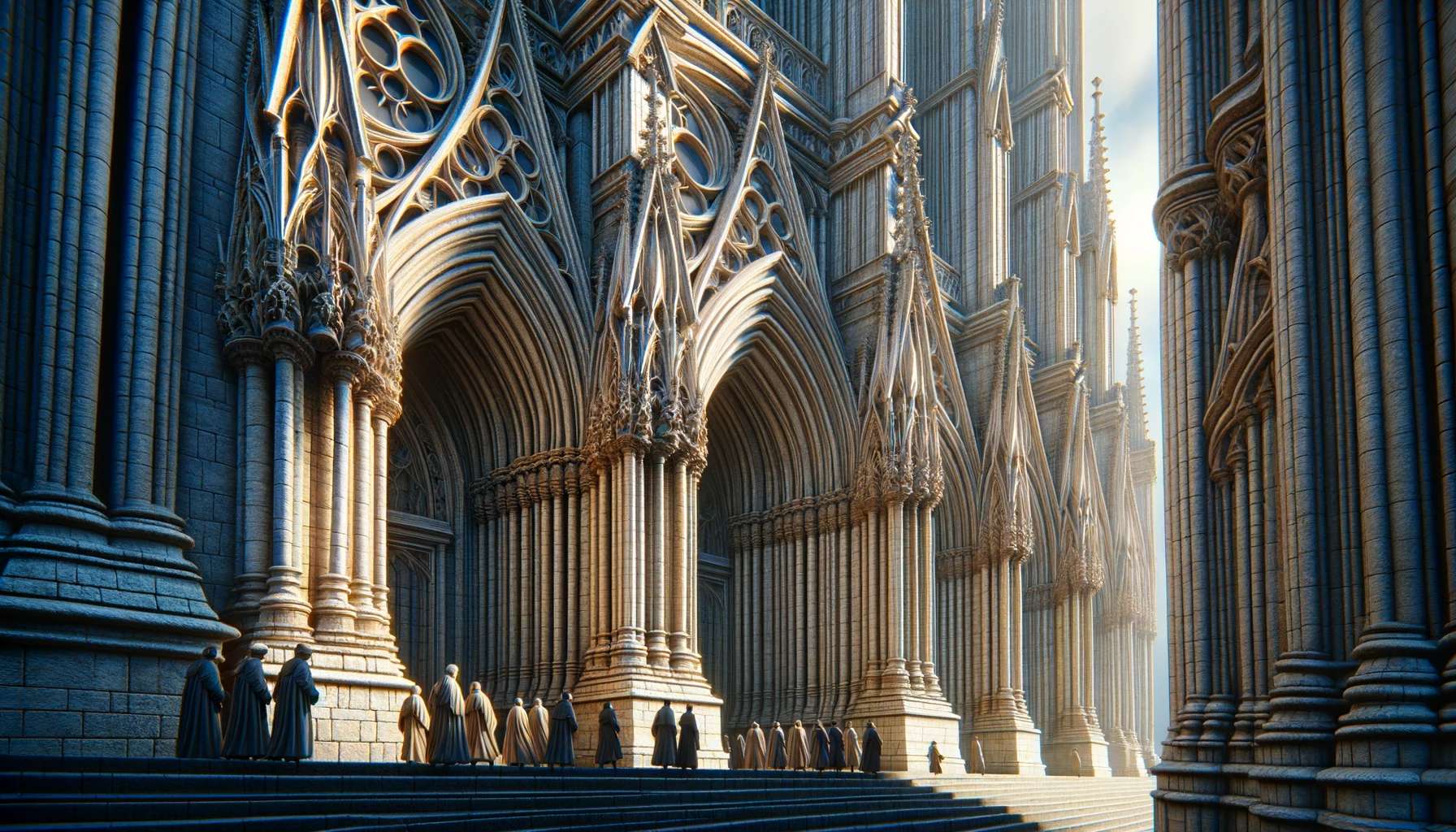

Arts and Culture
What Are The Main Structural And Stylistic Features Of A Gothic Cathedral?
Published: February 16, 2024
Jason DeRose, Managing Editor at Christian.net, uses his expertise in religion and journalism to deepen understanding of faith's societal impacts. His editorial leadership, coupled with a strong academic background, enriches the platform’s diverse content, earning him recognition in both journalism and religious circles.
Discover the key structural and stylistic elements of Gothic cathedrals in this insightful exploration of arts and culture. Uncover the intricate details and architectural marvels.
(Many of the links in this article redirect to a specific reviewed product. Your purchase of these products through affiliate links helps to generate commission for Christian.net, at no extra cost. Learn more)
Table of Contents
Introduction
Gothic cathedrals stand as timeless marvels of human ingenuity and artistic expression. These architectural masterpieces have captivated the imagination of people for centuries, drawing visitors from around the world to marvel at their grandeur and beauty. From the intricate details of their facades to the soaring heights of their spires, Gothic cathedrals are a testament to the creativity and craftsmanship of the medieval artisans who built them.
The term "Gothic" was initially used as a derogatory label for this style of architecture, as it was perceived as barbaric and uncivilized. However, over time, the Gothic style gained recognition and appreciation for its unique characteristics and aesthetic appeal. The Gothic period, which spanned from the 12th to the 16th century, marked a significant departure from the preceding Romanesque style, introducing innovative architectural techniques and design elements that transformed the landscape of European cities.
Gothic cathedrals were not merely places of worship; they were ambitious undertakings that reflected the spiritual and cultural aspirations of the societies that built them. These monumental structures served as symbols of religious devotion, political power, and communal identity, embodying the collective aspirations and achievements of their time. As such, they continue to inspire awe and admiration, inviting us to contemplate the profound significance of their existence and the enduring legacy of human creativity.
In this article, we will delve into the historical background, structural features, and stylistic elements of Gothic cathedrals, unraveling the secrets behind their enduring allure and exploring the intricate craftsmanship that defines these architectural wonders. Join us on a journey through time and space as we unravel the mysteries of Gothic cathedrals, shedding light on the profound impact they have had on art, culture, and the human spirit.
Historical Background of Gothic Cathedrals
The emergence of Gothic cathedrals was intricately linked to the cultural, social, and technological advancements of the medieval period. The transition from the Romanesque style to the Gothic style marked a pivotal moment in architectural history, characterized by a shift towards greater height, light, and volume in building design.
The development of Gothic architecture was deeply intertwined with the rise of the medieval Christian Church as a dominant cultural and political force. As the Church sought to assert its authority and influence, it embarked on ambitious building projects, constructing grand cathedrals that would serve as beacons of faith and symbols of divine majesty. These monumental structures were intended to inspire awe and reverence, reflecting the Church's aspirations to create a tangible connection between the earthly realm and the divine.
One of the defining features of Gothic cathedrals was their innovative use of architectural elements to achieve unprecedented heights and luminosity. The introduction of pointed arches, ribbed vaults, and flying buttresses allowed for the construction of soaring, open interiors flooded with natural light. This departure from the heavy, fortress-like structures of the Romanesque era represented a profound shift in architectural philosophy, emphasizing ethereal beauty and spiritual transcendence.
The construction of Gothic cathedrals also coincided with the flourishing of medieval trade and commerce, providing a platform for the exchange of ideas, materials, and expertise across different regions of Europe. This interconnectedness facilitated the dissemination of architectural innovations, enabling craftsmen and builders to draw inspiration from diverse sources and adapt their techniques to suit local conditions.
Furthermore, the patronage of powerful monarchs, bishops, and wealthy merchants played a crucial role in funding the construction of Gothic cathedrals, underscoring the close relationship between architecture, politics, and economics during the medieval period. The competition among cities to erect the most magnificent cathedral also fueled a spirit of artistic and technological rivalry, spurring advancements in engineering and design.
In essence, the historical background of Gothic cathedrals reflects a convergence of religious fervor, technological ingenuity, and artistic ambition. These monumental structures were not only testaments to the spiritual aspirations of their creators but also enduring symbols of human creativity and collective endeavor. As we unravel the historical context of Gothic cathedrals, we gain a deeper appreciation for the profound impact of these architectural marvels on the cultural landscape of medieval Europe and their lasting legacy in the annals of human achievement.
Structural Features of Gothic Cathedrals
Gothic cathedrals are renowned for their awe-inspiring structural elements, which not only showcase the technical prowess of medieval builders but also contribute to the ethereal beauty and grandeur of these architectural marvels. The following features define the structural essence of Gothic cathedrals:
1. Ribbed Vaults:
One of the defining characteristics of Gothic architecture is the extensive use of ribbed vaults. These intersecting arches create a network of sturdy supports that distribute the weight of the ceiling, allowing for the construction of spacious, open interiors. The ribbed vaults also contribute to the vertical emphasis of Gothic cathedrals, accentuating the sense of upward movement and spiritual aspiration.
2. Pointed Arches:
The pointed arch, another hallmark of Gothic design, enables the efficient transfer of weight and thrust, allowing for the creation of taller and more expansive spaces. This innovative architectural feature not only enhances the structural integrity of the building but also imparts a sense of grace and upward momentum, evoking a feeling of transcendence and spiritual elevation.
Read more: What Is The Main Part Of A Cathedral Called
3. Flying Buttresses:
Gothic cathedrals are distinguished by their external flying buttresses, which serve as elegant, arched supports that counteract the outward thrust of the vaulted ceilings. These buttresses not only provide structural stability but also create striking visual patterns on the exterior of the cathedral, adding to its architectural splendor.
4. Stained Glass Windows:
The incorporation of expansive stained glass windows is a defining feature of Gothic cathedrals, infusing the interiors with a kaleidoscope of vibrant colors and ethereal light. These windows not only serve as decorative elements but also symbolize the divine illumination that permeates the sacred space, creating an atmosphere of transcendence and spiritual contemplation.
5. Tall Spires and Towers:
Gothic cathedrals are often crowned with towering spires that reach towards the heavens, serving as beacons of faith and symbols of divine presence. These majestic structures not only accentuate the verticality of the cathedral but also serve as testaments to the aspirations of medieval builders to create structures that transcended earthly limitations.
6. Ornate Facades and Portals:
The elaborate facades and portals of Gothic cathedrals feature intricate carvings, sculptures, and decorative elements that reflect the craftsmanship and artistry of the medieval artisans. These ornate embellishments not only adorn the exterior of the cathedral but also convey symbolic narratives and spiritual allegories, inviting visitors to contemplate the profound mysteries of faith and salvation.
In essence, the structural features of Gothic cathedrals embody a harmonious fusion of technical innovation, artistic expression, and spiritual symbolism. These elements converge to create spaces that inspire awe, reverence, and contemplation, transcending the boundaries of time and culture to leave an indelible imprint on the human spirit.
Read more: What Did A Gothic Cathedral Symbolize
Stylistic Features of Gothic Cathedrals
The stylistic features of Gothic cathedrals encompass a rich tapestry of artistic elements that imbue these architectural wonders with a transcendent beauty and spiritual resonance. From the intricate carvings adorning their facades to the ethereal glow of their stained glass windows, Gothic cathedrals are veritable showcases of medieval craftsmanship and creative vision.
1. Sculptural Details:
The exteriors of Gothic cathedrals are adorned with an abundance of sculptural details, depicting scenes from religious narratives, figures of saints, and symbolic motifs. The intricate carvings, often executed with astonishing precision, serve as visual allegories, conveying profound theological messages and moral lessons. Every sculpted figure and ornamentation contributes to the overarching narrative of faith and salvation, inviting contemplation and spiritual reflection.
2. Decorative Capitals and Columns:
The capitals and columns within Gothic cathedrals are embellished with elaborate foliage motifs, geometric patterns, and figurative sculptures. These decorative elements not only showcase the skill of the artisans but also create a sense of organic harmony within the sacred space. The intertwining forms and intricate detailing exemplify the medieval reverence for nature and the divine order, infusing the interiors with a sense of sacred vitality.
3. Ethereal Stained Glass:
The stained glass windows of Gothic cathedrals are perhaps their most iconic stylistic feature. These luminous works of art transform sunlight into a kaleidoscope of colors, suffusing the interiors with a celestial glow. The vibrant hues and intricate designs of the stained glass panels narrate biblical stories and depict celestial visions, serving as metaphors for the divine light that illuminates the spiritual realm and transcends earthly existence.
4. Elaborate Tracery:
The delicate tracery patterns that adorn the windows and rose windows of Gothic cathedrals are marvels of geometric intricacy and artistic finesse. The interplay of stone and glass creates mesmerizing latticework designs that evoke a sense of divine order and cosmic harmony. These ornate traceries not only serve as structural supports for the stained glass but also symbolize the interconnectedness of the earthly and celestial realms, inviting contemplation of the mysteries of creation and transcendence.
5. Symbolic Imagery:
Throughout Gothic cathedrals, symbolic imagery abounds, manifesting in the form of allegorical sculptures, decorative motifs, and architectural symbolism. The use of symbolic language in the design and ornamentation of the cathedrals serves to communicate profound theological concepts and spiritual truths, engaging the viewer in a visual dialogue that transcends the limitations of written language.
In essence, the stylistic features of Gothic cathedrals constitute a symphony of artistic expression, spiritual symbolism, and cultural significance. These elements converge to create sacred spaces that transcend the boundaries of time and culture, inviting visitors to embark on a visual and spiritual journey through the medieval imagination and the enduring legacy of Gothic art and architecture.
Conclusion
In conclusion, Gothic cathedrals stand as enduring testaments to the ingenuity, creativity, and spiritual aspirations of medieval societies. From their soaring spires to their intricate carvings, these architectural marvels encapsulate the essence of an era marked by profound cultural, artistic, and technological advancements. The historical background of Gothic cathedrals reveals a convergence of religious fervor, technological innovation, and artistic ambition, reflecting the aspirations of the medieval Church and the broader societal context in which these monumental structures emerged.
The structural features of Gothic cathedrals, including ribbed vaults, pointed arches, flying buttresses, stained glass windows, and ornate facades, exemplify the technical prowess and visionary design principles that defined the Gothic style. These elements not only showcase the engineering ingenuity of medieval builders but also create spaces that inspire awe, reverence, and contemplation, transcending the boundaries of time and culture to leave an indelible imprint on the human spirit.
Likewise, the stylistic features of Gothic cathedrals, such as sculptural details, decorative capitals and columns, ethereal stained glass, elaborate tracery, and symbolic imagery, weave a rich tapestry of artistic expression and spiritual symbolism. Each element contributes to the overarching narrative of faith and salvation, inviting visitors to embark on a visual and spiritual journey through the medieval imagination and the enduring legacy of Gothic art and architecture.
As we reflect on the profound impact of Gothic cathedrals, it becomes evident that these architectural wonders are not merely relics of the past but living embodiments of human creativity and spiritual aspiration. Their timeless allure continues to captivate the hearts and minds of people across the globe, inviting us to contemplate the enduring legacy of these sacred spaces and the profound mysteries they embody.
In essence, Gothic cathedrals transcend the confines of architectural history; they stand as monuments to the human spirit, inviting us to marvel at the heights of human achievement and the enduring power of artistic expression. As we gaze upon their majestic spires and intricate details, we are reminded of the boundless potential of human creativity and the enduring quest for transcendence that unites us across time and space.
